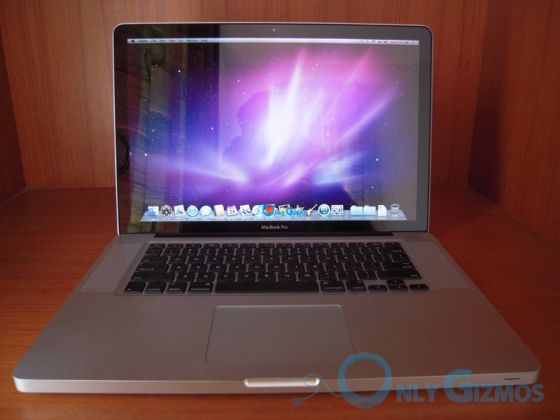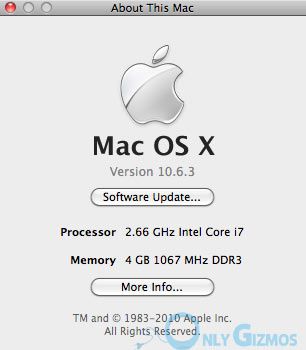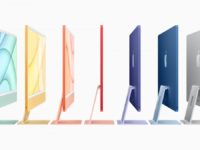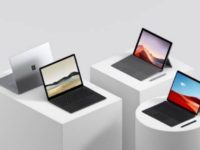
Boy, it sure is tough being a Mac junkie these days. There’s just no way of predicting when Cupertino will release Macs with the latest hardware under the hood. As with all things Apple, they’ll do it…when they’re good and ready.
The 2010 MacBook Pro Lineup
And so it is with the launch of the 2010 lineup of MacBook Pros. While the 15-inch and 17-inch MacBook Pros have made the switch to the newer line of Core-i CPUs, the 13-inch Pro still uses the older Core 2 Duo CPUs. For the spec-conscious, here’s how the range lines up – the 15-inch MacBook Pro is available in three standard configurations, all of which are kitted with a standard 4GB of DDR3 RAM, dual graphics processors, and a glossy 15.4-inch LED-backlit screen. The entry-level system comes with a 2.4GHz Core i5 processor and a 320GB hard drive, with a mid-range system sporting a 2.53GHz Core i5 processor and a 500GB hard drive and the top of the line model with a 2.66GHz Core i7 processor and a 500GB drive. With the 17-inches, you get the option of an either a 2.53GHz Core i5 or a 2.66GHz Core i7. And let’s not forget the most petite of the Pros – the entry-level 13-inch model comes with a 2.4GHz Intel Core 2 Duo CPU and a 250GB hard drive), and the higher end model with a 2.66GHz Core 2 Duo/ 320GB drive. Our review sample was the top-end 15.4-inch 2.66GHz Core i7/4GB DDR3 RAM model which retails at Rs. 1,29,900 (all inclusive).
Design
On the outside, you’d be easily forgiven if you mistook this Pro for a 2009 vintage. There is absolutely no difference externally, which isn’t a half bad thing really. The minimalist aluminium-unibody design is still the standard by which other laptops are measured for their looks and build quality, so Apple’s not upset any apple carts here. Having said that, since this is not a revolutionary upgrade, some of our complaints from the last iteration get carried over as well – the 2 USB ports are still too close to each other to be usable, and they’re still missing an HDMI or a USB 3.0 port. (Mental note: good luck seeing that on a Mac anytime soon!). The all-aluminum design means that the edges are still too sharp for comfort and that these babies still run pretty hot on a lap. If you’re planning on extended use, find a nice flat surface, will ya?

Performance
But it is under the covers of this beauty that the beast lies. Not only do you get 2010-spec processors, Apple’s gone one step further by mating them with some of the latest NVIDIA graphics. Under fairly moderate use – running multiple tabs on our favorite memory-hogging browser along with some photo edits are pretty much the norm – the Core i7 stands up tall to the task, and then some. The Core i7 processor supports a feature called Hyper Threading (as do the i5s in the rest of the 15-inch MacBook Pro range). In effect, this enables two threads to run at one time on each core, giving the dual-core chips four effective cores. Along with the Turbo Boost technology, which switch off idle cores when applications aren’t using them to increase the speed of the active cores, the i7s under the hood means that the blistering performance boosts one finally gets to see isn’t just a function of the increased MHz.
Graphics wise, Apple’s used Intel HD integrated graphics, which shares 256MB of the system’s memory for everyday applications, but for apps that require more grunt, the new MacBook Pros can use its discrete Nvidia GeForce GT330M graphics, with upto 512MB of dedicated graphics memory. Unlike the previous gen, where switching between integrated and dedicated graphics meant logging out and back into Mac OSX, Apple’s new automatic graphics switching technology looks for graphics frameworks used by individual apps when they’re launched. What this translates into is that if your app uses OpenGL and Core Animation graphics, the switching tech decide to switch to the higher-powered discrete graphics processor, switching seamlessly back to the energy-saving integrated graphics when you’re done. Apps that support GPU-acceleration support, such as Photoshop, also show noticeable improvements.
So how does the graphics switching work on a day-to-day basis? It certainly does work well, a little too well at times. As a user, you have little choice to decide or tell which graphics the MacBook Pro is using at a given time, and the only choice you have is to switch the switching system on or off. Remember, “off” just keeps the Nvidia graphics active all the time (a battery hog!) – there’s no way to switch off the dedicated graphics altogether like say when you’re looking to eke out the last bit of battery. Also, not surprisingly, the switching only works under Mac OS X, so the dedicated card is always active if you install Windows on your Mac.

Battery Life
The more important question – what impact does this have on the MacBook Pro’s otherwise legendary battery life? Those familiar with the last generation of MacBook Pros will remember the all-bay battery life that Apple had delivered with their switch to non-user-replaceable batteries. This time around, the Core i7 processor and the fairly capable discrete graphics has meant that sustained processor and graphics intensive usage will bring the battery life down to a little over 4 hours of use, but if you use it for everyday work like text editing, and music playback, the automatic graphics switching will let you coast past the seven hour mark before dropping dead. Like I mentioned earlier, there is no way to run solely on the integrated graphics, and that’s where the battery hit is felt the most.
Verdict
But the more things change, the more some stuff will stay the same. The MacBook Pros. The glossy widescreen display still is bright and delivers excellent contrast and color reproduction, and the excellent glass touchpad now features inertial scrolling, much like the iPhone. There’s still no Blu-ray support, though to be fair, it was never expected either.
So, should you fork out close to Rs. 1.3 lakhs for this baby? Most of the enhancements are performance-oriented, and if you need the extra power of the i7 and the discrete graphics for your work, go for it by all means. I’m not convinced that it warrants an upgrade for those who’ve bought a MacBook Pro within the past year and a half though.






that’s useful
here it is very clear apple macbook pro laptops